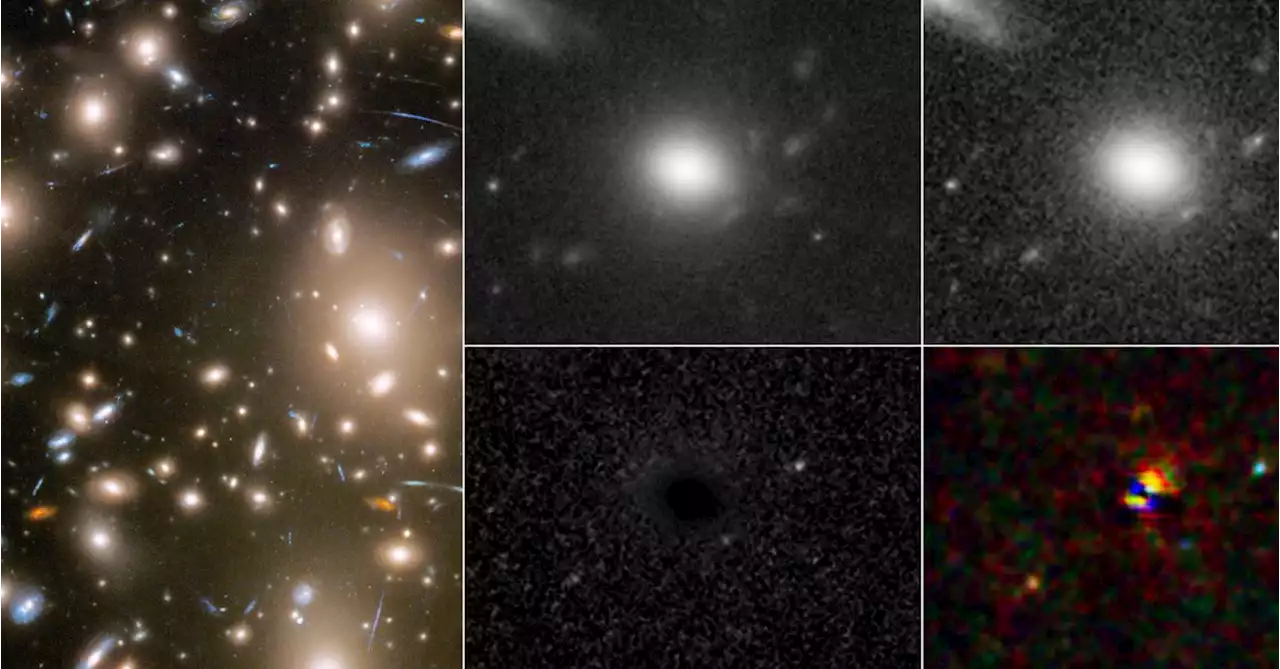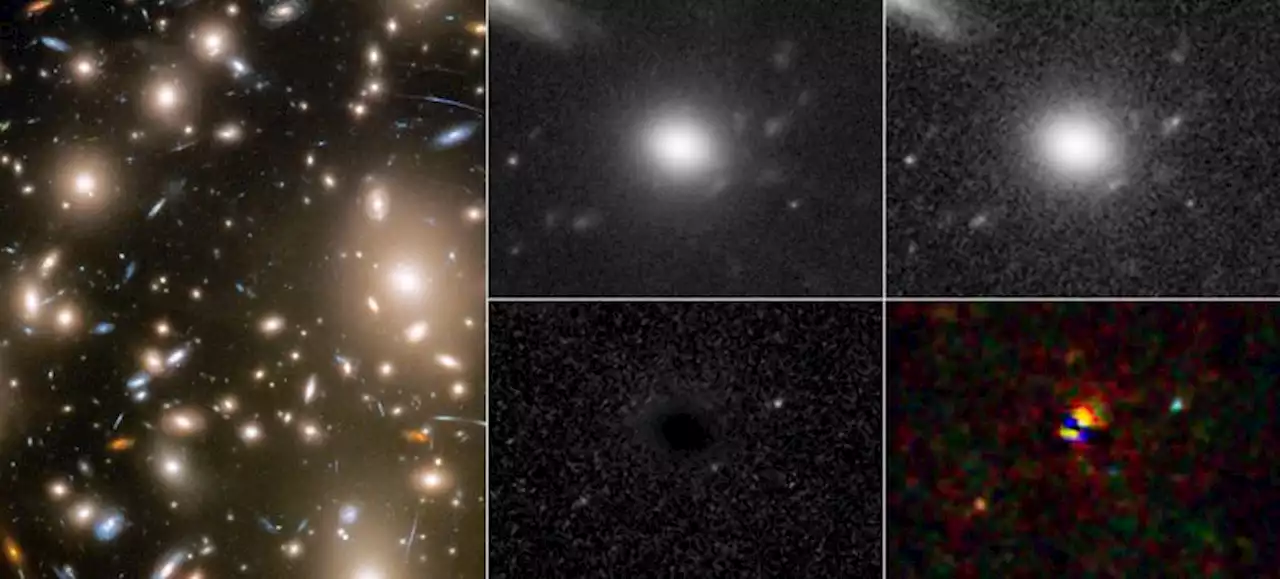A blast from the past: Hubble Telescope captured a supernova, the colossal explosion of a star, from over 11 billion years ago.
But the chance to spot a supernova is difficult because it all happens in short time frame. It can last for hours or a few days, Wenlei Chen, lead author of the research paper and postdoctoral researcher in the University of Minnesota School of Physics and Astronomy, said in a statement.
But the three images Hubble took captured the early stages of the"stellar explosion." The first image is taken around six hours after the core collapses, with the second and third image taken days afterward. Throughout the images, researchers say the supernova went from appearing blue in the early hot phase, to it turning red while cooling down.
"You've got the massive star, the core collapses, it produces a shock, it heats up, and then you're seeing it cool over a week. I think that’s probably one of the most amazing things I've ever seen," said Patrick Kelly, study leader and assistant professor in the University of Minnesota’s School of Physics and Astronomy.Hubble witnessed three faces of a star’s evolving supernova explosion, thanks to a phenomenon known as gravitational lensing.
United States Latest News, United States Headlines
Similar News:You can also read news stories similar to this one that we have collected from other news sources.
 MarketWatch Live: Dow drops 500 points as S&P 500, Nasdaq wipe out weekly gainsStocks have hit their lows of the day, with the Dow down more than 550 points
MarketWatch Live: Dow drops 500 points as S&P 500, Nasdaq wipe out weekly gainsStocks have hit their lows of the day, with the Dow down more than 550 points
Read more »
 Hubble telescope reveals huge star's explosion in blow-by-blow detailAbout 11.5 billion years ago, a distant star roughly 530 times larger than our sun died in a cataclysmic explosion that blew its outer layers of gas into the surrounding cosmos, a supernova documented by astronomers in blow-by-blow detail.
Hubble telescope reveals huge star's explosion in blow-by-blow detailAbout 11.5 billion years ago, a distant star roughly 530 times larger than our sun died in a cataclysmic explosion that blew its outer layers of gas into the surrounding cosmos, a supernova documented by astronomers in blow-by-blow detail.
Read more »
 Hubble telescope reveals huge star's explosion in blow-by-blow detailAbout 11.5 billion years ago, a distant star roughly 530 times larger than our sun died in a cataclysmic explosion that blew its outer layers of gas into the surrounding cosmos, a supernova documented by astronomers in blow-by-blow detail. Researchers on Wednesday said NASA's Hubble Space Telescope managed to capture three separate images spanning a period of eight days starting just hours after the detonation - an achievement even more noteworthy considering how long ago and far away it occurred. The images were discovered in a review of Hubble observation archival data from 2010, according to astronomer Wenlei Chen, a University of Minnesota postdoctoral researcher and lead author of the study published in the journal Nature.
Hubble telescope reveals huge star's explosion in blow-by-blow detailAbout 11.5 billion years ago, a distant star roughly 530 times larger than our sun died in a cataclysmic explosion that blew its outer layers of gas into the surrounding cosmos, a supernova documented by astronomers in blow-by-blow detail. Researchers on Wednesday said NASA's Hubble Space Telescope managed to capture three separate images spanning a period of eight days starting just hours after the detonation - an achievement even more noteworthy considering how long ago and far away it occurred. The images were discovered in a review of Hubble observation archival data from 2010, according to astronomer Wenlei Chen, a University of Minnesota postdoctoral researcher and lead author of the study published in the journal Nature.
Read more »
 Hummingbird hitches 500-mile car ride to warmer weather - AutoblogSome hummingbirds instinctively fly south when the weather turns cold. This one hitched a car ride instead.
Hummingbird hitches 500-mile car ride to warmer weather - AutoblogSome hummingbirds instinctively fly south when the weather turns cold. This one hitched a car ride instead.
Read more »
 Dow falls 500 points as post-midterms selloff picks up steam WednesdayStocks have climbed for three-straight days ahead of the midterm elections.
Dow falls 500 points as post-midterms selloff picks up steam WednesdayStocks have climbed for three-straight days ahead of the midterm elections.
Read more »
